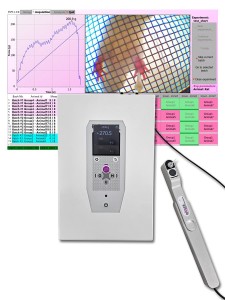Authors
L Rahal, M Thibaut, I Rivals, J Claron, et al
Lab
Laboratory of Brain Plasticity, ESPCI Paris, PSL Research University, CNRS UMR 8249, Paris, France
Journal
Scientific Reports
Abstract
Chronic pain pathologies, which are due to maladaptive changes in the peripheral and/or central nervous systems, are debilitating diseases that affect 20% of the European adult population. A better understanding of the mechanisms underlying this pathogenesis would facilitate the identification of novel therapeutic targets. Functional connectivity (FC) extracted from coherent low-frequency hemodynamic fluctuations among cerebral networks has recently brought light on a powerful approach to study large scale brain networks and their disruptions in neurological/psychiatric disorders. Analysis of FC is classically performed on averaged signals over time, but recently, the analysis of the dynamics of FC has also provided new promising information. Keeping in mind the limitations of animal models of persistent pain but also the powerful tool they represent to improve our understanding of the neurobiological basis of chronic pain pathogenicity, this study aimed at defining the alterations in functional connectivity, in a clinically relevant animal model of sustained inflammatory pain (Adjuvant-induced Arthritis) in rats by using functional ultrasound imaging, a neuroimaging technique with a unique spatiotemporal resolution (100 microm and 2_ms) and sensitivity. Our results show profound alterations of FC in arthritic animals, such as a subpart of the somatomotor (SM) network, occurring several weeks after the beginning of the disease. Also, we demonstrate for the first time that dynamic functional connectivity assessed by ultrasound can provide quantitative and robust information on the dynamic pattern that we define as brain states. While the main state consists of an overall synchrony of hemodynamic fluctuations in the SM network, arthritic animal spend statistically more time in two other states, where the fluctuations of the primary sensory cortex of the inflamed hind paws show asynchrony with the rest of the SM network. Finally, correlating FC changes with pain behavior in individual animals suggest links between FC alterations and either the cognitive or the emotional aspects of pain. Our study introduces fUS as a new translational tool for the enhanced understanding of the dynamic pain connectome and brain plasticity in a major preclinical model of chronic pain.
Source :

 Pain - Thermal Allodynia / Hyperalgesia
Pain - Thermal Allodynia / Hyperalgesia Pain - Spontaneous Pain - Postural Deficit
Pain - Spontaneous Pain - Postural Deficit Pain - Mechanical Allodynia / Hyperalgesia
Pain - Mechanical Allodynia / Hyperalgesia Learning/Memory - Attention - Addiction
Learning/Memory - Attention - Addiction Physiology & Respiratory Research
Physiology & Respiratory Research











![Dynamic Weight Bearing 2.0 – Postural Module [Add-on]](https://bioseb.com/733-home_default/dynamic-weight-bearing-20-add-on-postural-module.jpg)
























 Pain
Pain Central Nervous System (CNS)
Central Nervous System (CNS) Neurodegeneration
Neurodegeneration Sensory system
Sensory system Motor control
Motor control Mood Disorders
Mood Disorders Other disorders
Other disorders Muscular system
Muscular system Joints
Joints Metabolism
Metabolism Cross-disciplinary subjects
Cross-disciplinary subjects CONFERENCES & MEETINGS
CONFERENCES & MEETINGS 
